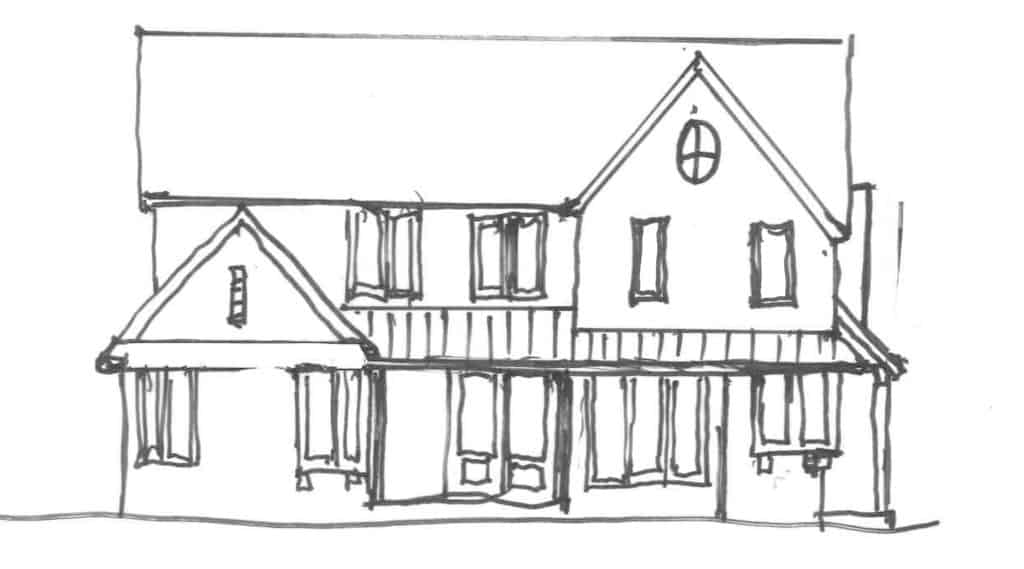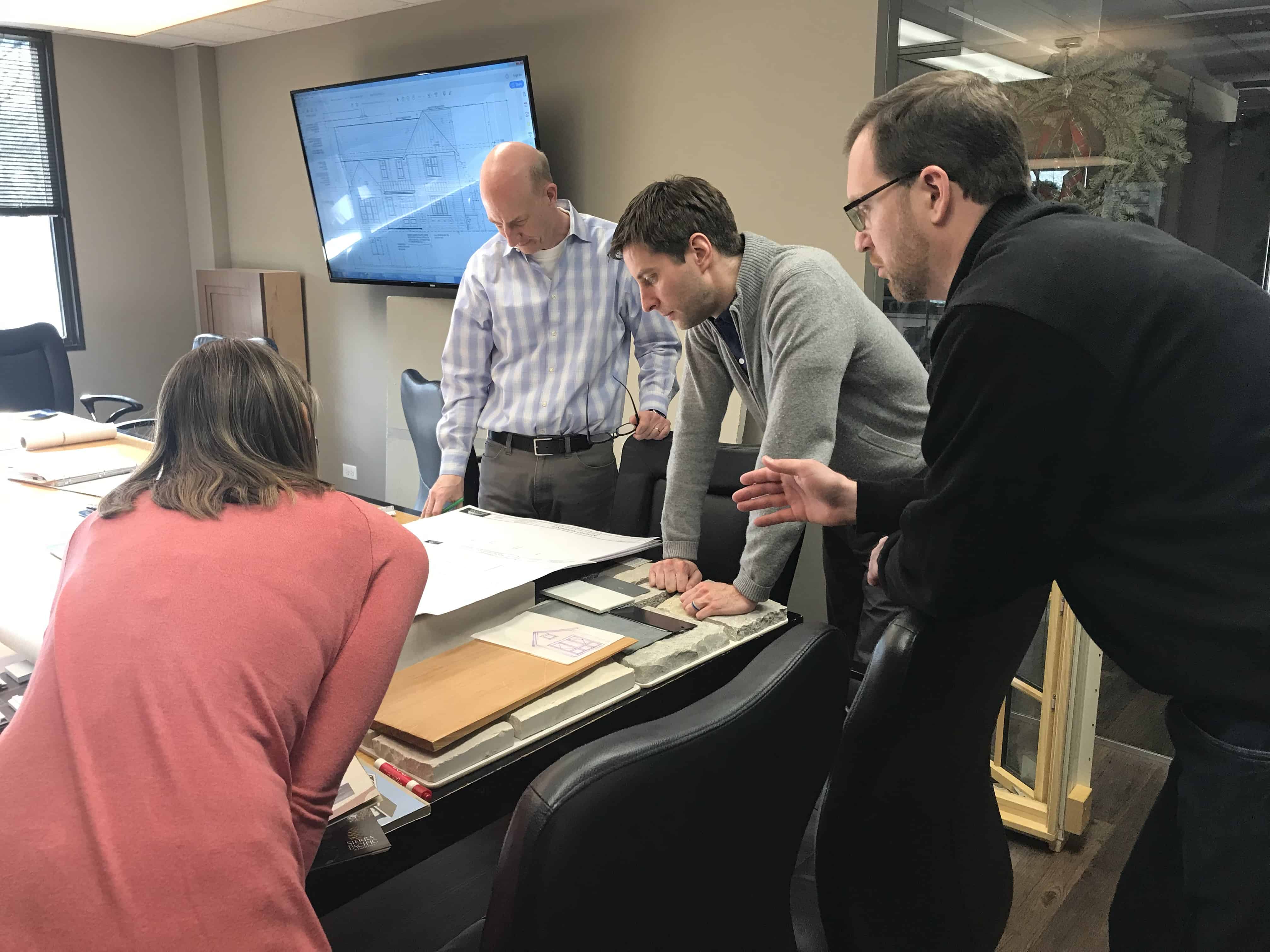Enjoy this continuing series as we follow Jonna and Doug through the design and build of their family’s new Kenilworth home. This time, we talk to the Pickell team about the initial design process.
“Design meetings are the most fun,” says Orren Pickell Building Group president, Lisa Pickell. “It’s such a cool experience to watch the process unfold. People come in with ideas about what they need, and those notions often evaporate as we’re all sitting around the table.”
At the initial design meeting, clients are asked to bring in answers to a list of questions that probe their basic preferences. At the design meetings, however, the focus is on day-to-day living. So, while Jonna and Doug knew that they liked a contemporary farmhouse style with a lot of light, the design meeting uncovered their desire for spaces that encouraged play and spending time together.
Why focus on lifestyle over aesthetics? It’s simple. A family with preschool children doesn’t have the same requirements as an empty-nest couple who loves to formally entertain. Concentrating on real life, entertaining style, house guest needs, hobbies and plans for the future results in a home that perfectly supports the individuals who live in it.
Trading Up Preconceived Ideas
It’s natural to assume that you need certain features in a home because you’ve gotten used to them in the past. But when building a custom home, you literally have a blank sheet of paper to work from. The exterior or kitchen that you’ve had pinned and have been dreaming about may turn out to be no more than a jumping-off point.
“Sometimes a client will come in with a layout,” adds Lisa, “So we’ll start there. But we push further—we ask our clients to put themselves in our hands and move beyond what they think they need, and consider why they think they need it.”
“For example,” she continues, “A client may envision the kitchen positioned a certain way. We’ll point out that we generally place it close to the garage, to make it easier to unload groceries. That may be a small thing, but it comes into play nearly every day. So it adds up to something much bigger. Those moments can be real turning points in how people think about their homes.”

Design for the People Who Will Live There
One way our team stands out,” Lisa offers, “Is that there isn’t any ego involved. It’s not the architect’s home. We want to build a house that is great to live in. Our people get together around a table and they listen and they think about livability and proportions and what’s right for the life you describe.”







